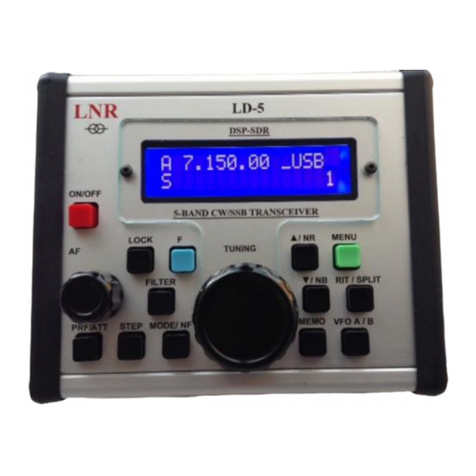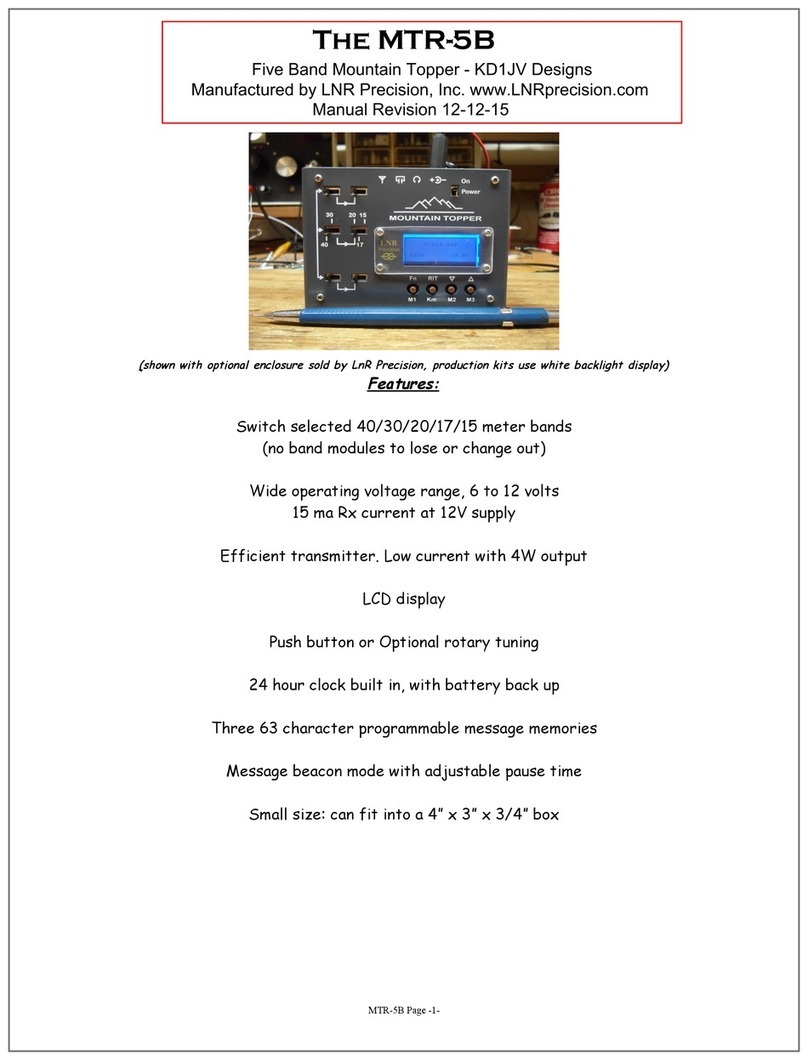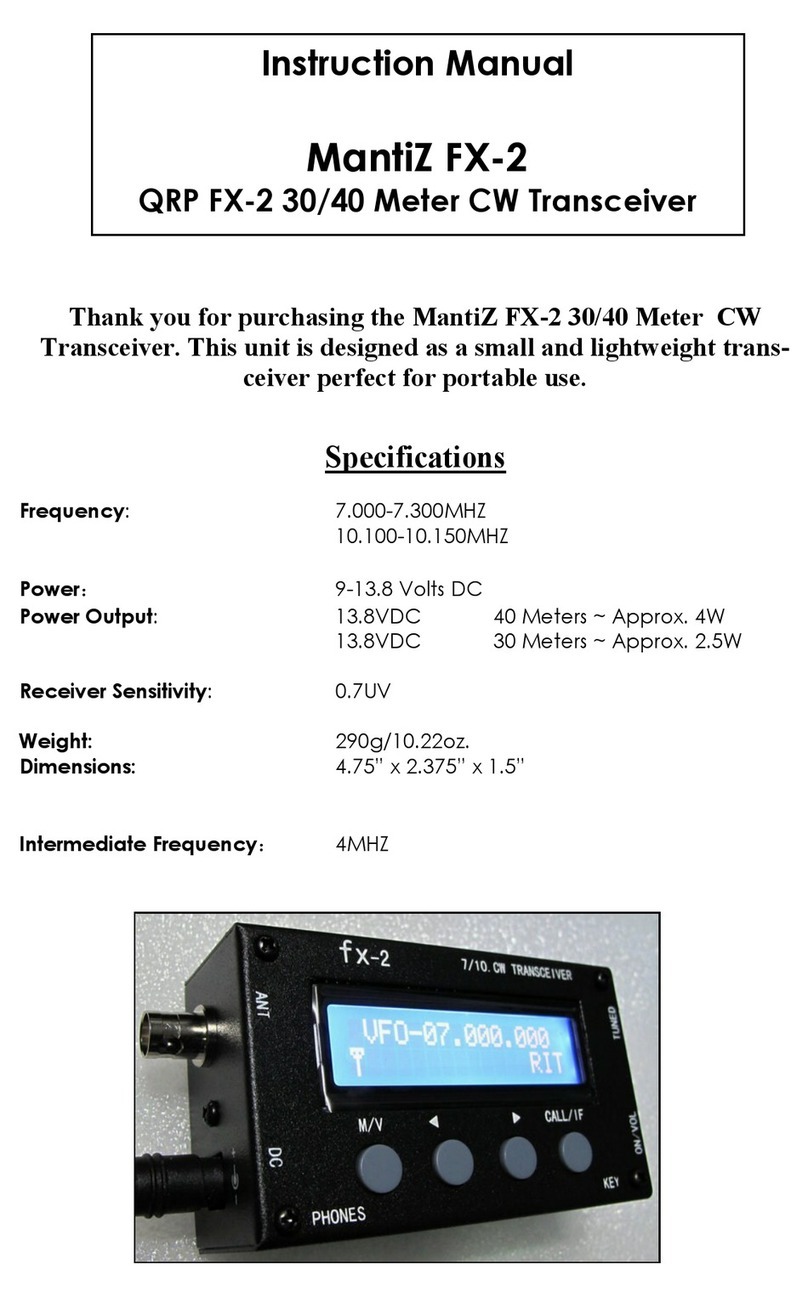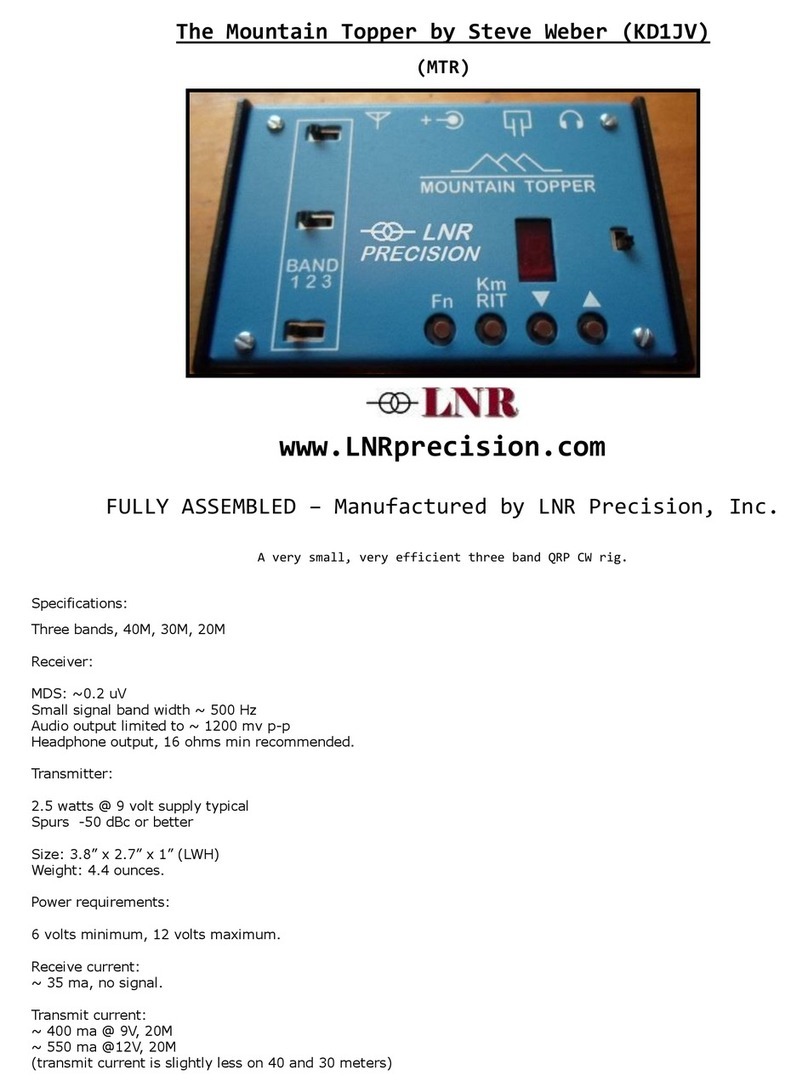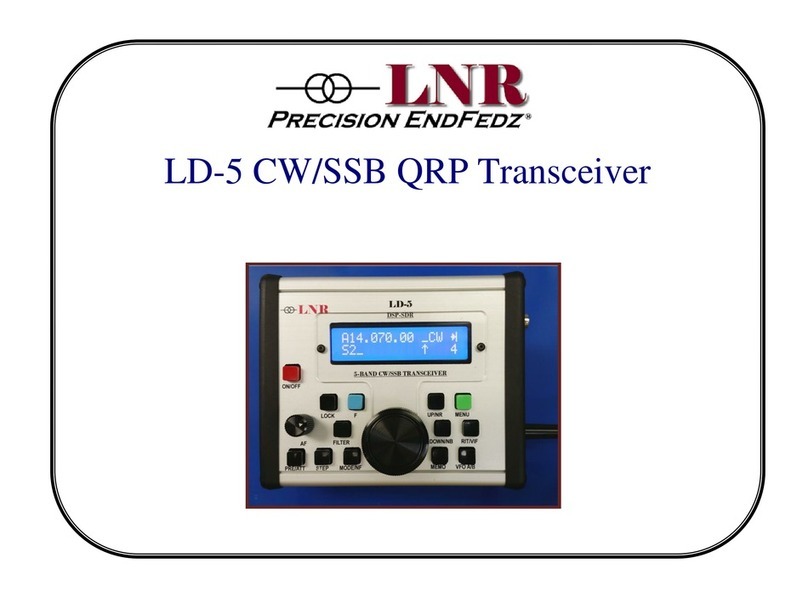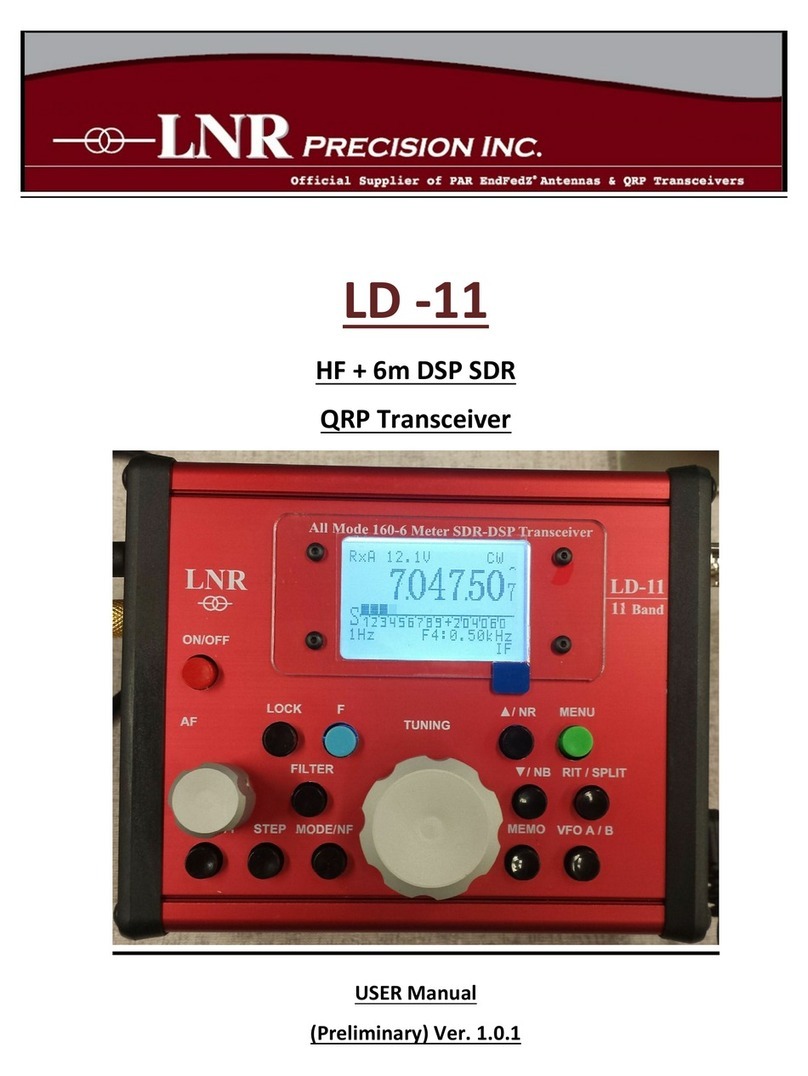Basic Operation
Connect antenna to your radio or dummy load.
Plug in your desired HAM key into port labeled KEY.
Opt. for SSB: Plug in microphone into port labeled MIC.
Before you plug in Straight key or Paddle, you may
want to get familiar with the screens and functions.
Rotate the VFO knob and notice the frequency
change.
Volume control can be increased by turning knob
clockwise. Volume will show on display as a value
between 0-63. Volume control has an additional
feature which is covered later in the manual.
Tap BAND button to desired frequency (ex. 40M, 30M,
20M, 17M). FX-4A has a VFO A and a VFO B. To toggle
between VFO A and VFO B, Tap the A/B Button. Tap
MODE button to toggle between CW, LSB, USB.
To toggle CW/A to CW/B mode, tap the A/B button.
For SSB mode, tap MODE button until USB/LSB (upper
sideband/lower sideband) is displayed.
To activate RIT feature, [PH] RIT button until RIT is
displayed. Adjustments can be made by VFO knob. To
exit RIT, [PH] RIT button.
Tap Volume knob to advance tuning rate. The rate is
1Hz - 10 Hz.
To increase to 100 Hz tuning rate, tap RIT button and
“TS” will display. To return to VFO, tap RIT again.
The FX-4A has TWO VFOs although they cannot be
used as split operation. The TWO VFOs are good to use
for CW Mode or USB/LSB operations.
S-Meter Function: The S-Meter reads signal strength,
output power, and reflective power.






